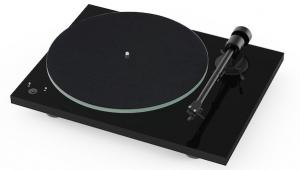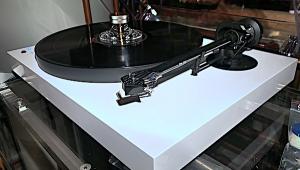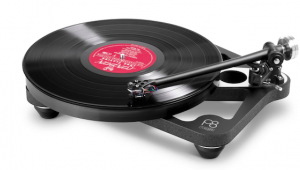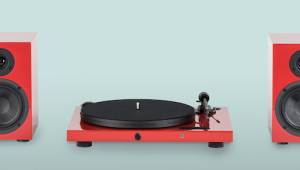Windows 11 further deepens the user’s experience with a full range of exclusive and refined features designed to simplify, protect, and enhance daily tasks for this page . With activation, personalization settings are completely unlocked, allowing users to tailor everything from the Start menu layout and taskbar configuration to accent colors, wallpaper, and even the way notifications are displayed. This freedom to adjust Windows 11 to fit specific needs and preferences creates a user-friendly environment that feels truly individualized.
Wilson Benesch Full Circle turntable, ACT 0.5 tonearm, & Ply MC cartridge Page 2
W-B floats the arm with its unique "Kinematic" bearing assembly. Neither a standard ballrace bearing nor a unipivot, the system consists of a single hardened ball bearing in the upper arm, and three balls in contact with one another in the lower assembly. The upper ball rests on and makes contact with the three lower ones. Thus there are three contact points between the upper and lower assemblies, which increases both overall stability and the number of pathways for the dissipation of vibrational energy out of the arm and into the arm-mounting platform.
The arm's outward behavior mimics that of a unipivot in that it is free to rotate to some degree on its azimuth axis. Stability is enhanced and azimuth is adjusted via the underslung counterweight: two parallel metal cylinders connected to a frame that rides on a counterweight shaft protruding from the rear of the bearing housing. While there are no calibration marks on the shaft, the tight friction fit of the loaded ball interface on the shaft, combined with the very smooth action both fore and aft and around the shaft, make setting azimuth and tracking force reasonably easy.
The antiskating mechanism consists of a grooved shaft protruding at a right angle from the bearing housing, to which is looped a short piece of monofilament with a ball weight attached. The filament is suspended over a second shaft, and adjustments are made by moving the filament loop closer to or farther away from the bearing. VTA is adjusted via a smooth shaft located directly under the bearing housing, and locked with a set screw tapped at a right angle through the arm-mounting platform. Because the shaft is neither threaded nor calibrated, the ACT 0.5 has not been designed for the easy, consistently accurate VTA changes some tweaky audiophiles feel they need to make with different thicknesses and brands of records.
The Ply
My Full Circle came with the W-B's $900 Ply moving-coil cartridge pre-installed. The Ply starts life as a variant of a high-output Benz Glider motor, which W-B mounts on...? Yes, class, a carbon-fiber platform, conveniently tapped for easy installation. The Ply consists of a nude elliptical (7.6µm by 17.7µm) stylus mounted to a solid boron pipe. The copper-coil-over-iron-former/magnet assembly outputs a robust 1.58mV. Tracking force is between 1.8 and 2.0gm. According to the importer, W-B specifies a stylus rake angle (SRA) of 21° as opposed to Benz's specified 24° for its Glider. Add 2gm of tracking force, and, with the arm perfectly parallel to the record, you get 18°, which W-B says is the usual cutter-head angle. I don't think it's quite that simple—there are issues of lacquer springback and the like—but 18° with the arm perfectly parallel is certainly a good starting point.
Setup & Use
You can have the Full Circle up and running in less than an hour. I set up my review sample on the top shelf of a Zoethecus stand fitted with a "Z slab" shelf. The 'table can be assembled in a few minutes, and cartridge alignment is reasonably straightforward—especially if you use the Wally setup gear. Because the armtube is tapered, setting VTA can be tricky—that's where the Wally VTA gauge can be a real timesaver. For those not lucky enough to have Wally's gauge, W-B has silk-screened a horizontal line along part of the length of the tube. W-B supplies a Wally-like overhang gauge—a record-sized piece of heavy paper upon which is inscribed the precise arc the stylus should travel across the record when overhang is correctly set.
Using the Full Circle is basically straightforward: flip the On/Off switch, move the raised arm over the record, and lower the Rega-sourced cueing arm. The only difficulty you'll encounter is the rocking motion of the tapered arm, which is quite wide where it contacts the cueing platform. It rolls back and forth before settling on the spot where you've placed it on the cueing platform. You get used to that after a short while. Ditto the flat, stubby fingerlift, which doesn't offer the last word in stylus security. You're best off pressing on it from the front with your thumb to raise and lower the arm—an easy skill to master.
Before listening to music, I checked out the Full Circle's ability to isolate the outside world and found it impressive, given that there's no suspension in the conventional sense. With the stylus in the groove and the platter not rotating, even at moderate to high volume, tapping on the base resulted in a well-attenuated but distinct "thump" (which is preferable, of course to a loud and amorphous blob of sound).
Moving up one layer to the main platform yielded a sound that was slightly louder, but still distant and well organized. Still, as with any unsuspended 'table, you have to provide the Circle with a stable, level platform. Running a stethoscope over the 'table with the motor running indicated that the design did an impressive job of isolating motor noise from reaching either the bearing or the arm platform.
Sound
I'm still not comfortable resting my valuable records on a dust-sucking piece of hairy felt, but I made the sacrifice. After letting the Ply and the bearing break in for about 40 hours, I began listening seriously. But was I hearing the cartridge, the 'table, or the combination?
The only way to truly assess a turntable is with a known cartridge, so I removed the Ply and put the Transfiguration Temper in its place. True, this costs more than the Full Circle, but the arm is clearly good enough to handle the best.
The Full Circle's bass performance was absolutely superb. It produced extremely deep, tight, and very well controlled and focused low frequencies. While it wasn't in the same league dynamically—or in digging out the very lowest notes—as the Simon Yorke/Vibraplane combination, given the huge price differential it was uncomfortably close. Orchestral climaxes left the Circle unfazed, and when there were large bass excursions, the 'table didn't muddy the midbass waters.
I recently reviewed for The Tracking Angle King Super Analogue's reissue of Georg Solti's recording of R. Strauss's Also sprach Zarathustra (KIJC 9198), which, while not quite the emotional equal of Reiner's famous 1954 reading (RCA/Classic LSC-1806), has some jaw-cracking timpani strokes courtesy of legendary recording engineer Kenneth Wilkinson. The Full Circle passed muster, locking in those huge wallops and convincingly rendering the sound of mallets on skins while maintaining superb orchestral focus.
- Log in or register to post comments





















































